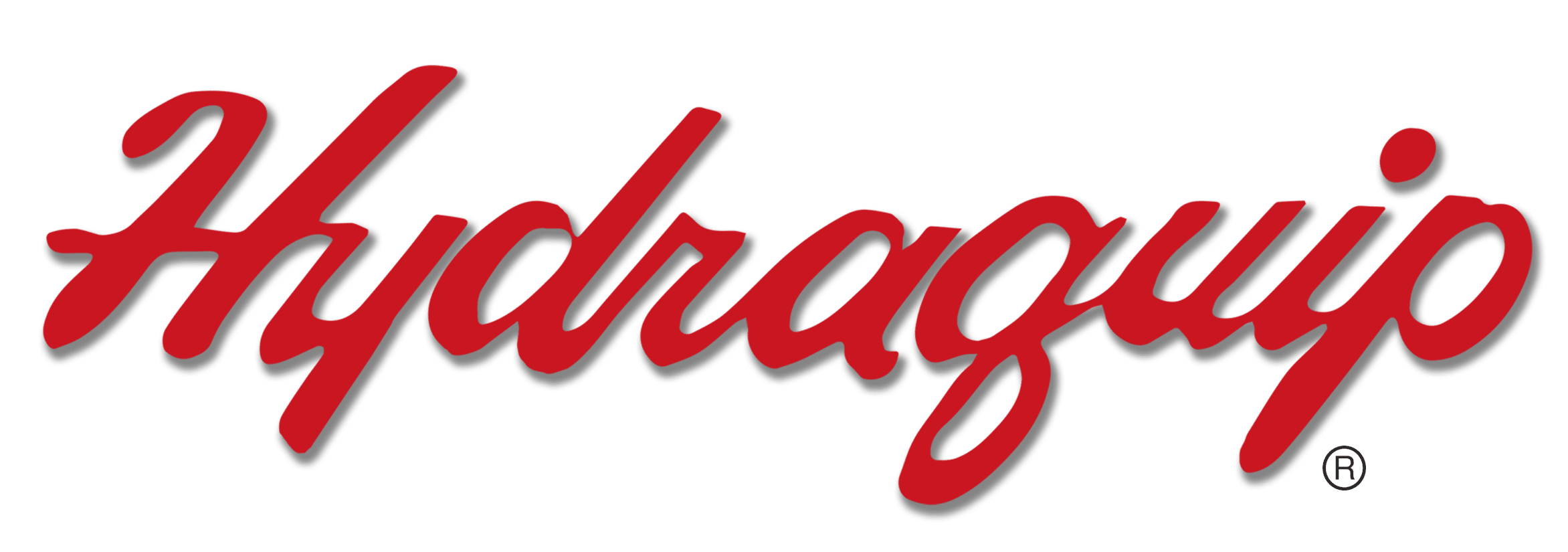Have you ever felt overwhelmed by all of the options for hydraulic hose fittings?
A lot of options exist in the industry – our goal is to give you a very basic guide to definitions of types of fittings and some of the best practices to select the best fitting for your applications.
Overview of 7 common types of fittings:
- JIC 37⁰ Flares: The Joint Industrial Conference (JIC) fitting = most common, consists of parallel threads and a 37⁰ cone on the fitting end that attaches to either a flared tube or hose fitting.
- O-Ring Face Seals: flat sealing surfaces with an embedded seal, which mates to flanged tubing or hose fittings. Can reduce the risk of over-torqueing, and the captured seal prevents leakage.
- O-Ring Boss: has same straight thread as JIC 37⁰ flare, but with an o-ring seal instead of a metal-to-metal flare for the best leak free connection
- NPT Pipe Thread (National Pipe Tapered): traditional tapered thread fittings available in low-pressure black iron and brass or high pressure steel and stainless steel. NPT were originally designed for water pipe plumbing (60 psi) and in general are not recommended for high-pressure applications as they tend to leak more than any other style of connection.
- DIN Metric 24⁰ Bite Type: this is the most common hydraulic fitting style in Europe, and is used with metric-sized tubing or hose. Versions of this fitting are available with an elastomeric seal on the mating surface for better sealing and reusability.
- Four-Bolt Flange: these connections conform with SAE j518 and ISO 6162-1 and -2 are especially suited for larger sizes, higher pressures and assemblies in tight quarters for leak free connections.
- Quick disconnect fittings: used to provide fast and easy connection and disconnection of fluid lines. These fittings are also known as quick connects or quick release couplings. Typically quick disconnect fittings are operated by hand. They often are used to replace fitting connections which require tools to assemble and disassemble.
Crimp vs. Field Attachable Fittings
A crimp fitting is most common and requires a crimping machine to attach the fitting to the hose, watch this video to see a crimper in action attaching a fitting to an Eaton match-mate hose – easily color-coded to identify the correct size fitting for the hose.
If you are working in the field, and don’t have access to a crimper, field attachable fittings are also available (sometimes called resuable fittings). These consist of two pieces, a socket and a nipple and can be made anywhere provided your hose is “Field Attachable Fitting”-compatible.
Factors to consider when choosing the right fitting…
- Pressure Rating: due to the risk of leakage, JIC fittings and NPT threads are not recommended for high pressure or high vibration applications. Most OEMs use o-ring face seals and DIN metric fittings for higher pressure applications.
- Availability: because JIC and NPT fittings have been in the field for years, they are more easily accessible, less costly and a viable solution for low pressure applications.
- Reliability: NPT fittings have been favored in the field in the past because leaks can be fixed by simply tightening the fitting. This has led to cracked fittings which can cause much more damage if left uncorrected. JIC is also still susceptible to cracked flares from overaggressive torqueing. This leads to the best reliability coming from o-ring face seal fittings and DIN metric fittings because of the elastomeric seal in the mating surface which eliminates over-torqueing and leakage risks.
- Versatility: JIC fittings can connect to any foreign or American port and expand/reduce between sizes. JIC fittings are also typically stocked by vendors for easy accessibility.
Hydraquip is a value-added distributor for Eaton hose with over 200,000 sq ft of inventory between locations in Tulsa, Houston, Dallas (TX), and Lafayette (LA). We provide complete hose assemblies as well as hose kits, high pressure hose build and test, and our sales people are all fluid power certified to help you select the right fitting for your hose.

